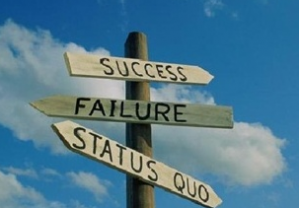Over time, the R&D function had become insular and out of touch with the rest of the organization and the market. They collaborated well within each regional site, helped manufacturing facilities improve technical process, and created a project list that actually exceeded the number of technical people across the function.

Turning around R&D had become a matter of strategic priority for the company if it was to retain its technical leadership and ensure a successful future. The new function head was working on a process to dramatically streamline the list of projects, and ensuring strategic business priorities got the real attention.
Our opportunity was to work with the new function head as he sought to rebuild his team and the credibility of R&D across the organization. Here are some of the ways we have supported this group:
Clarifying the difference between good and great R&D leadership. Good vs. really poor leadership is easy to see; the ineffective leaders may or may not get removed, and the good leaders assume they are good enough and get complacent. To reframe what it means to engage as truly effective R&D leaders, we interviewed senior leaders inside and outside R&D. Their observations permitted creation of a custom 360-degree feedback tool, which was then used to access the views of stakeholders inside and outside R&D function. The results are being used to set new expectations for leadership and for collaboration between R&D and the rest of the business.
Turning technical updates into relevant business communication. Scientists and engineers, like many technical professions, often take great pride in the detailed stories of how they conduct their research. The volume of projects that had been established, coupled with the level of detail researchers wanted to provide, left the Commercial business leaders dismissive the relevance of these technical updates and the time they consumed. By changing the model for providing updates, and by allowing the stakeholders to help shape the design of these meetings, Commercial leaders could now see the relevance of research for sales and for increasing impact on current customer relationships.
Balancing regional and global perspectives. The historically regional R&D sites had to now act as a global R&D operation. Savvy leaders know that quickly going from a regional to a global focus includes the risk trading one obsession for another, only to find that you are caught up fighting resistance, rather than creating the future. We used polarity mapping of competing regional and global perspectives to create common vision of sustainable R&D leadership that is both regional and global.
Rebuilding an organizational function requires changing how your team operates, while engaging the rest of the organization so they experience your vision of the function in action.
 Impact Without Authority
Impact Without Authority
 Action Learning Guide
Action Learning Guide